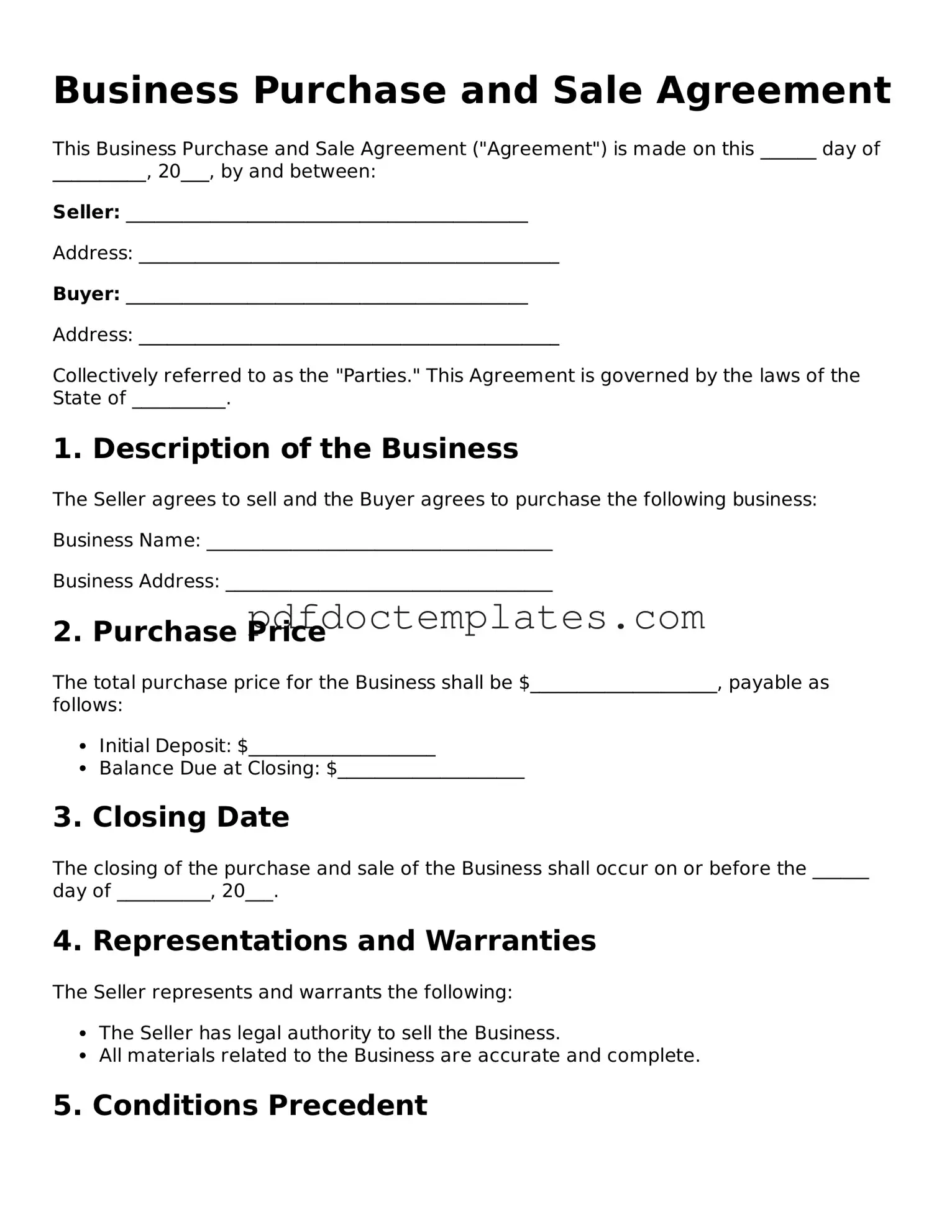Business Purchase and Sale Agreement
This Business Purchase and Sale Agreement ("Agreement") is made on this ______ day of __________, 20___, by and between:
Seller: ___________________________________________
Address: _____________________________________________
Buyer: ___________________________________________
Address: _____________________________________________
Collectively referred to as the "Parties." This Agreement is governed by the laws of the State of __________.
1. Description of the Business
The Seller agrees to sell and the Buyer agrees to purchase the following business:
Business Name: _____________________________________
Business Address: ___________________________________
2. Purchase Price
The total purchase price for the Business shall be $____________________, payable as follows:
- Initial Deposit: $____________________
- Balance Due at Closing: $____________________
3. Closing Date
The closing of the purchase and sale of the Business shall occur on or before the ______ day of __________, 20___.
4. Representations and Warranties
The Seller represents and warrants the following:
- The Seller has legal authority to sell the Business.
- All materials related to the Business are accurate and complete.
5. Conditions Precedent
The Buyer’s obligation to complete the purchase is subject to the satisfaction of the following conditions:
- Satisfactory completion of due diligence.
- Execution of all necessary agreements.
6. Confidentiality
Both Parties agree to keep all information shared during the negotiation and execution of this Agreement confidential.
7. Governing Law
This Agreement shall be governed by and construed in accordance with the laws of the State of __________.
8. Signatures
IN WITNESS WHEREOF, the Parties have executed this Agreement as of the date first above written.
_________________________________________
Seller
_________________________________________
Buyer
